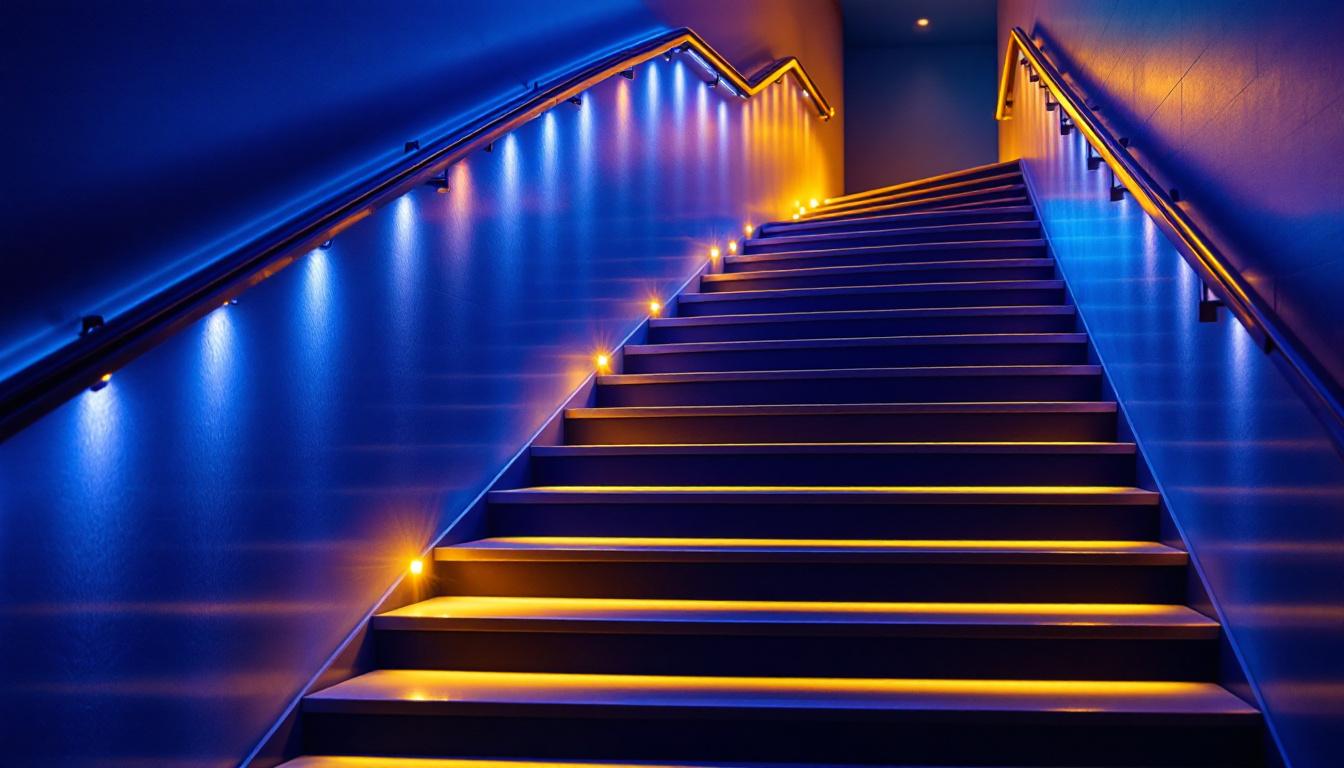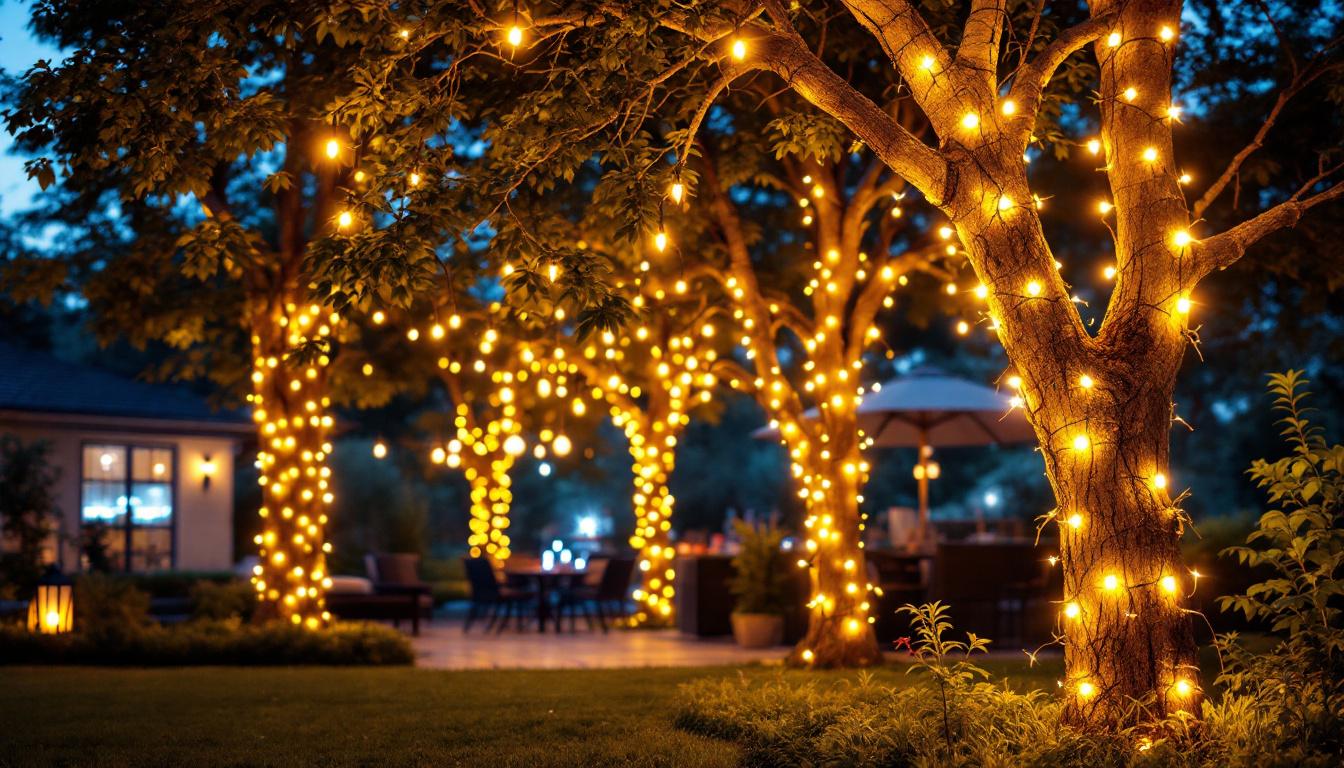
In the realm of modern lighting design, LED technology has transformed the way spaces are illuminated. Among the various applications of LED lights, stair lighting stands out as both a functional and aesthetic enhancement. This guide aims to provide lighting contractors with essential insights into stair LED lights, covering everything from design considerations to installation techniques.
Proper stair lighting is crucial for safety and ambiance. Poorly lit staircases can lead to accidents, making it essential for contractors to prioritize effective lighting solutions. LED lights offer several advantages, including energy efficiency, longevity, and versatility, making them an ideal choice for stair applications.
Safety is the primary concern when it comes to stair lighting. A well-lit staircase minimizes the risk of slips and falls, particularly in residential and commercial settings where foot traffic is high. Contractors should consider the placement and brightness of LED lights to ensure that each step is adequately illuminated.
In addition to brightness, the color temperature of the LED lights plays a significant role. Warmer tones can create a welcoming atmosphere, while cooler tones may enhance visibility. Understanding the specific needs of the space can help contractors make informed decisions about the type of lighting to install.
Furthermore, it is essential to consider the use of motion sensors in stair lighting systems. These sensors can automatically activate the lights when someone approaches, providing illumination only when needed. This not only enhances safety but also contributes to energy savings, as the lights will not remain on unnecessarily. Incorporating such technology can significantly improve the functionality of stair lighting, making it a smart choice for both residential and commercial properties.
Beyond safety, stair LED lights contribute to the overall aesthetic of a space. They can accentuate architectural features, create visual interest, and enhance the mood of an environment. Contractors should consider how different lighting designs can complement the existing decor and architecture.
For instance, recessed lighting can provide a sleek, modern look, while strip lights along the edges of stairs can add a contemporary flair. The ability to customize the lighting design allows contractors to cater to the unique preferences of clients, ensuring satisfaction with the final result.
Moreover, the choice of fixtures can also play a crucial role in enhancing the staircase’s visual appeal. Pendant lights or wall sconces can be strategically placed to create a dramatic effect, drawing attention to the staircase as a focal point of the home or building. Additionally, using dimmable LED lights can allow for flexibility in ambiance, enabling users to adjust the brightness according to the time of day or occasion, thus further enriching the overall experience of the space.
There are various types of LED lights suitable for stair applications, each offering distinct advantages. Understanding these options allows contractors to recommend the best solutions for their clients’ needs.
Recessed stair lights are embedded into the stair risers or walls, providing a clean and unobtrusive lighting solution. These lights are ideal for modern designs where a minimalist aesthetic is desired. They can be installed at various heights to create a seamless look while ensuring adequate illumination.
One of the key benefits of recessed lights is their ability to reduce glare, making them suitable for both residential and commercial spaces. Additionally, they can be equipped with dimmers to allow for adjustable brightness, enhancing versatility. The installation process for recessed lights can be straightforward, often requiring only a small cutout in the stair riser or wall, which minimizes disruption during installation. This feature makes them an excellent choice for renovations where maintaining the existing structure is a priority.
Step lights are specifically designed to illuminate each step individually. These lights can be mounted directly onto the stair treads or risers, providing focused illumination. They are particularly effective in outdoor settings, where visibility is essential for safety during nighttime hours.
Available in various designs and finishes, step lights can be customized to match the style of the staircase. Contractors should consider the brightness and beam angle when selecting step lights to ensure they meet the client’s requirements. Furthermore, step lights can be integrated with motion sensors, automatically turning on when someone approaches the stairs, thus enhancing safety and convenience. This feature is particularly beneficial in high-traffic areas or for homes with children and elderly residents, where falls can be a serious concern.
LED strip lights offer a flexible and dynamic lighting solution for stairs. They can be installed along the edges of staircases, providing a continuous line of light that enhances visibility. These strips are available in various colors and can be controlled via smart systems for added convenience.
One of the significant advantages of LED strip lights is their adaptability. They can be cut to fit specific lengths, making them suitable for any staircase design. Moreover, contractors can utilize RGB strips to create customizable lighting effects, adding a unique touch to the overall design. The ability to change colors or set different moods can transform the staircase into a focal point of the home, making it not just functional but also an integral part of the interior decor. Additionally, LED strip lights can be paired with smart home technology, allowing homeowners to control the lighting through their smartphones or voice-activated devices, further enhancing the user experience and convenience.
Installing stair LED lights requires careful planning and execution. Proper installation not only ensures functionality but also enhances the aesthetic appeal of the staircase. Here are some key techniques to consider.
Before installation, contractors should plan the layout of the lighting. This involves determining the number of lights needed, their placement, and the wiring requirements. A well-thought-out layout will ensure that the staircase is evenly illuminated and that no areas are left in shadow.
Using design software can help visualize the final look and make adjustments as needed. Engaging with clients during this phase can also provide valuable feedback and ensure their preferences are incorporated into the design.
Proper wiring is crucial for the safety and functionality of stair LED lights. Contractors should ensure that the electrical system can handle the load of the installed lights. It is also essential to follow local building codes and regulations to ensure compliance and safety.
For outdoor installations, weatherproofing is necessary to protect the lights and wiring from the elements. Using appropriate connectors and enclosures can help extend the lifespan of the lighting system.
Once the installation is complete, testing the lights is vital. This step allows contractors to identify any issues with brightness, placement, or wiring. Adjustments can be made as necessary to optimize the performance of the lights.
Additionally, educating clients on how to operate any smart features or dimmers can enhance their experience and satisfaction with the installation. Providing maintenance tips can also help clients keep their stair lighting in top condition.
As the demand for energy-efficient solutions grows, LED lights stand out as a sustainable choice. Contractors should consider the environmental impact of their lighting choices and educate clients on the benefits of LED technology.
One of the most significant advantages of LED lights is their longevity. Unlike traditional incandescent bulbs, which may need frequent replacements, LED lights can last for years with minimal maintenance. This not only reduces waste but also lowers the overall cost of ownership for clients.
Contractors should highlight this benefit to clients, emphasizing the long-term savings associated with LED installations. Providing information on the expected lifespan and warranty of the products can further reassure clients of their investment.
LED lights consume significantly less energy than traditional lighting options. This reduced energy consumption translates to lower electricity bills, making LED lighting an attractive option for both residential and commercial clients. Contractors should provide clients with estimates of potential energy savings to illustrate the financial benefits.
Additionally, incorporating smart lighting controls can further enhance energy efficiency. These systems allow for automated scheduling and dimming, ensuring that lights are only used when necessary.
Stair lighting design is continually evolving, with new trends emerging to enhance both functionality and aesthetics. Staying informed about these trends can help contractors provide cutting-edge solutions to their clients.
Smart lighting technology is gaining popularity in residential and commercial applications. These systems enable users to control their stair lighting remotely via smartphones or voice-activated devices. Contractors should consider integrating smart technology into their designs to meet the growing demand for convenience and customization.
Smart lighting can also include features such as motion sensors, which automatically turn on lights when someone approaches the stairs. This not only enhances safety but also adds a level of sophistication to the lighting design.
Clients are increasingly interested in customizing the color temperature of their stair lighting. Offering options for warm, cool, or adjustable color temperatures allows contractors to cater to individual preferences and enhance the overall ambiance of the space.
Furthermore, the ability to change color temperatures can create different moods throughout the day or for specific occasions, making stair lighting more versatile and appealing.
Stair LED lights are an essential component of modern lighting design, offering both safety and aesthetic benefits. For lighting contractors, understanding the various types of stair lighting, installation techniques, and design trends is crucial for delivering exceptional results to clients.
By prioritizing energy efficiency and sustainability, contractors can not only meet client expectations but also contribute to a greener future. As the demand for innovative lighting solutions continues to grow, staying informed and adaptable will ensure success in the ever-evolving landscape of lighting design.
Ready to elevate your stair lighting projects with the highest quality LED solutions? At LumenWholesale, we offer an extensive selection of spec-grade lighting products designed to meet the needs of the most discerning contractors. Our commitment to affordability and quality means you can access premium lighting at wholesale prices, ensuring your projects shine without breaking the bank. Plus, with free shipping on bulk orders, you can stock up on the best lighting options without worrying about extra costs. Take the next step towards exceptional lighting design and discover wholesale lighting at the best value today.

Discover the ultimate guide to covered ceiling lights and learn how to future-proof your lighting projects with innovative designs and energy-efficient solutions.

Illuminate your outdoor spaces with style and efficiency! Discover the ultimate guide to LED outdoor string lighting, covering everything from installation tips to design ideas and energy-saving benefits.

Discover the essential guide for lighting contractors on emergency lights with battery backup.

Discover expert insights with our guide on ceiling fan lighting. Learn quick tips from lighting contractors to enhance your home’s ambiance and functionality.